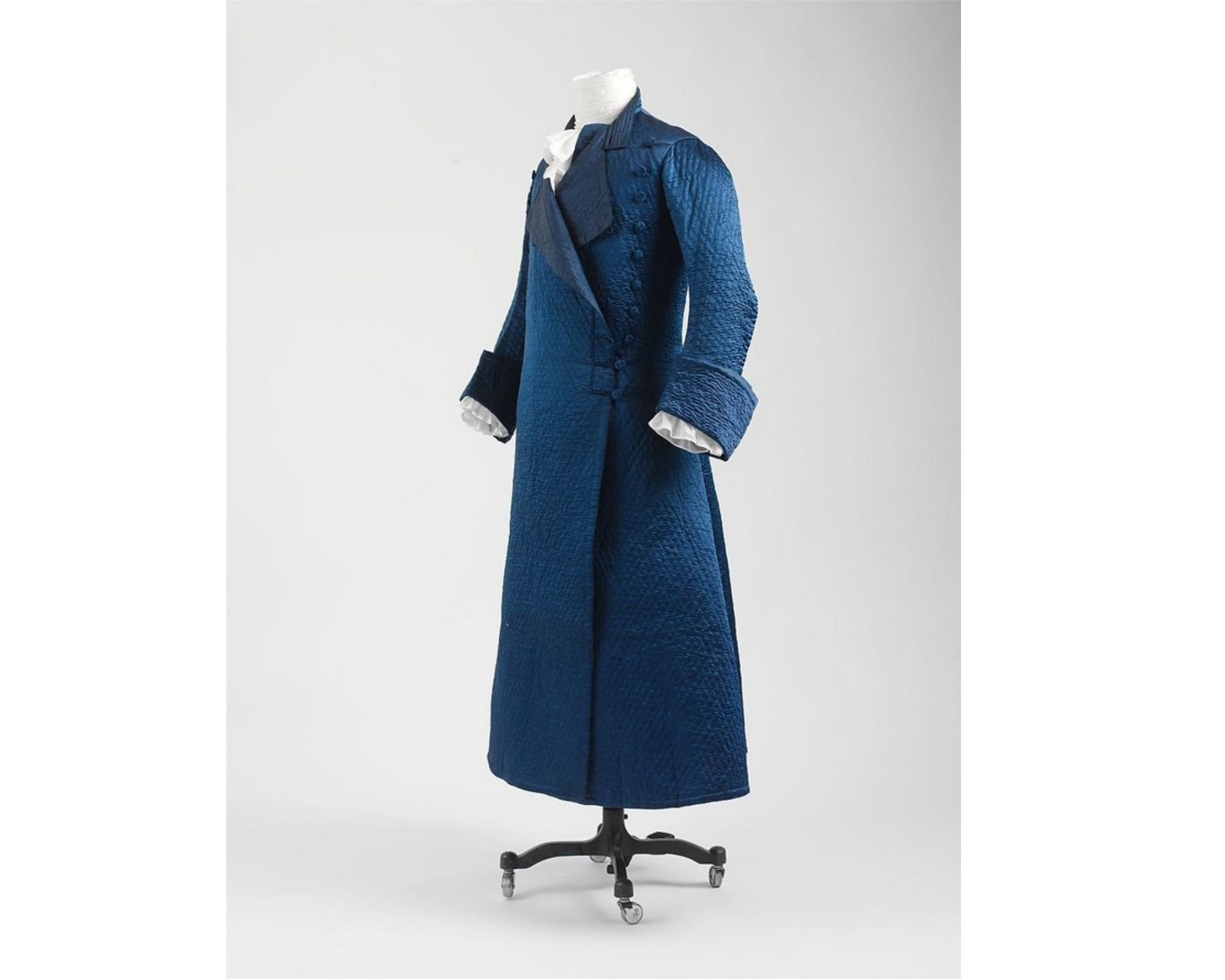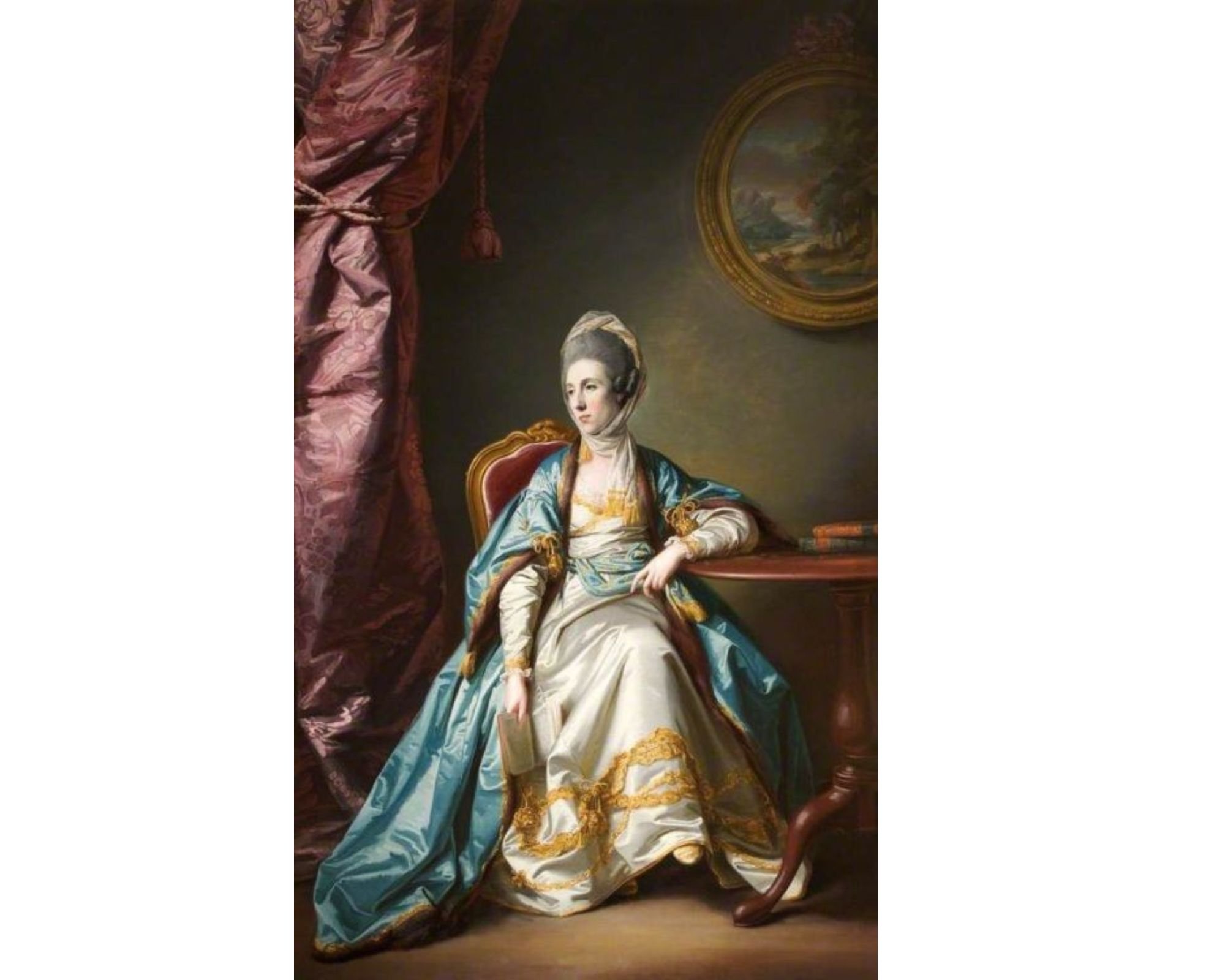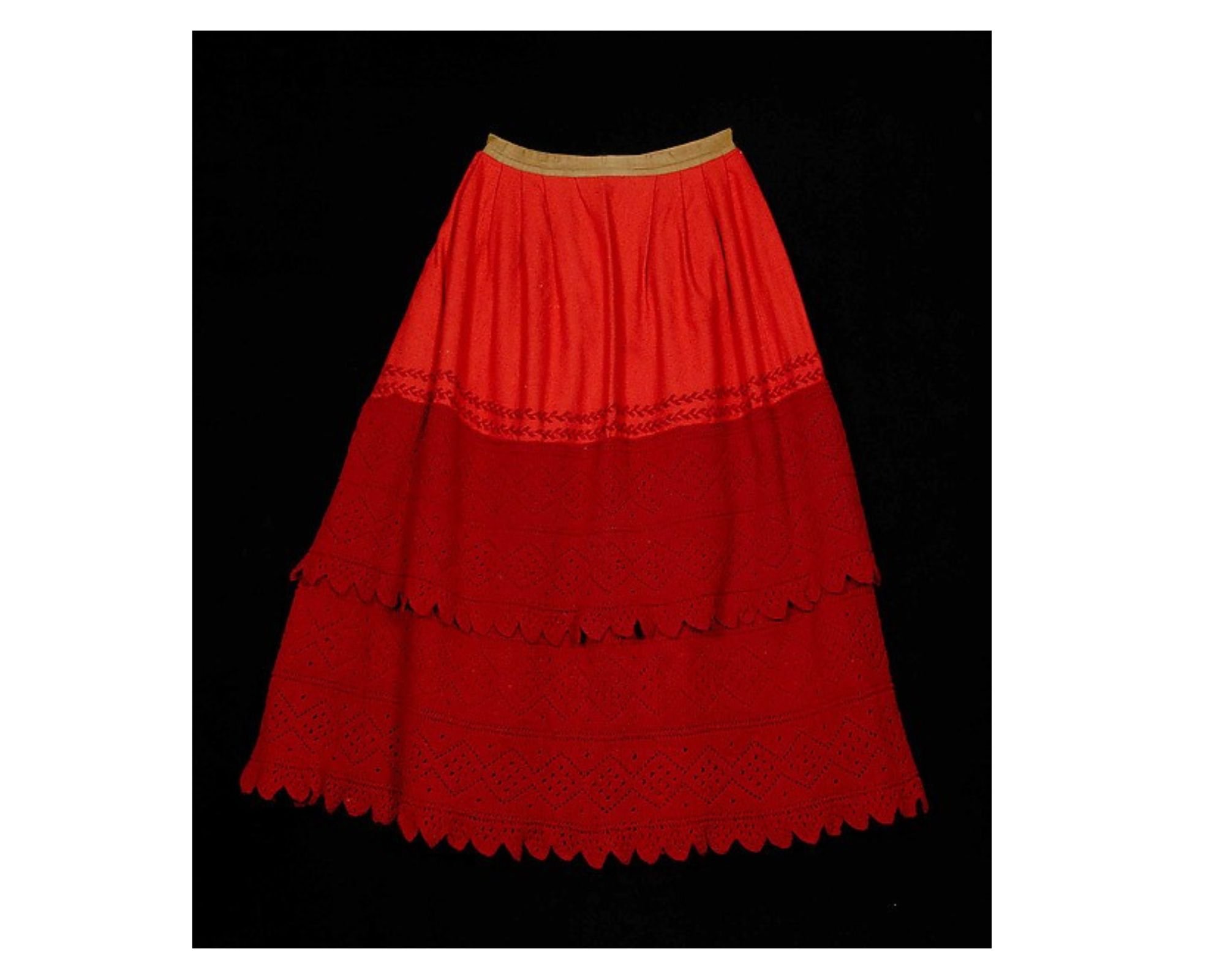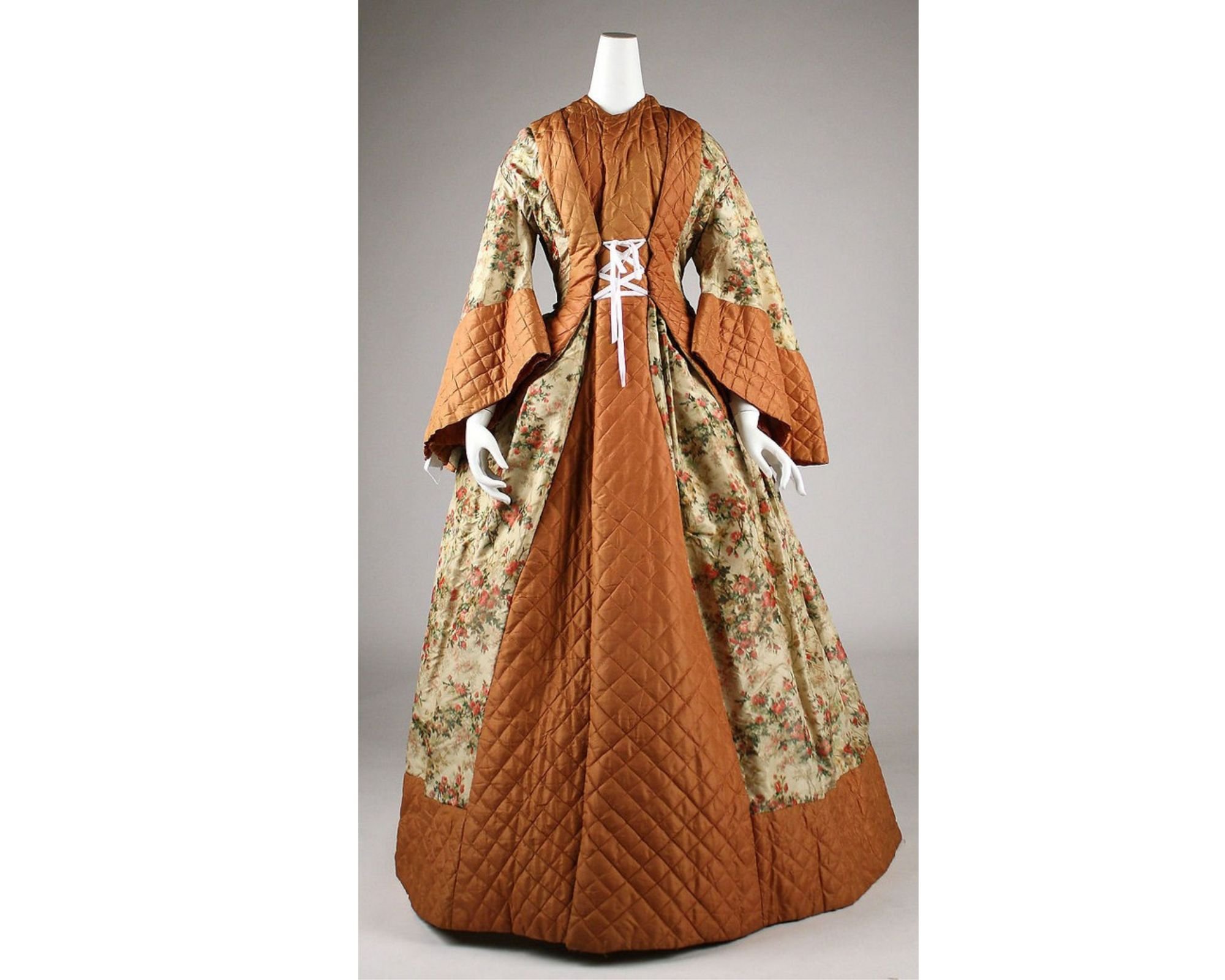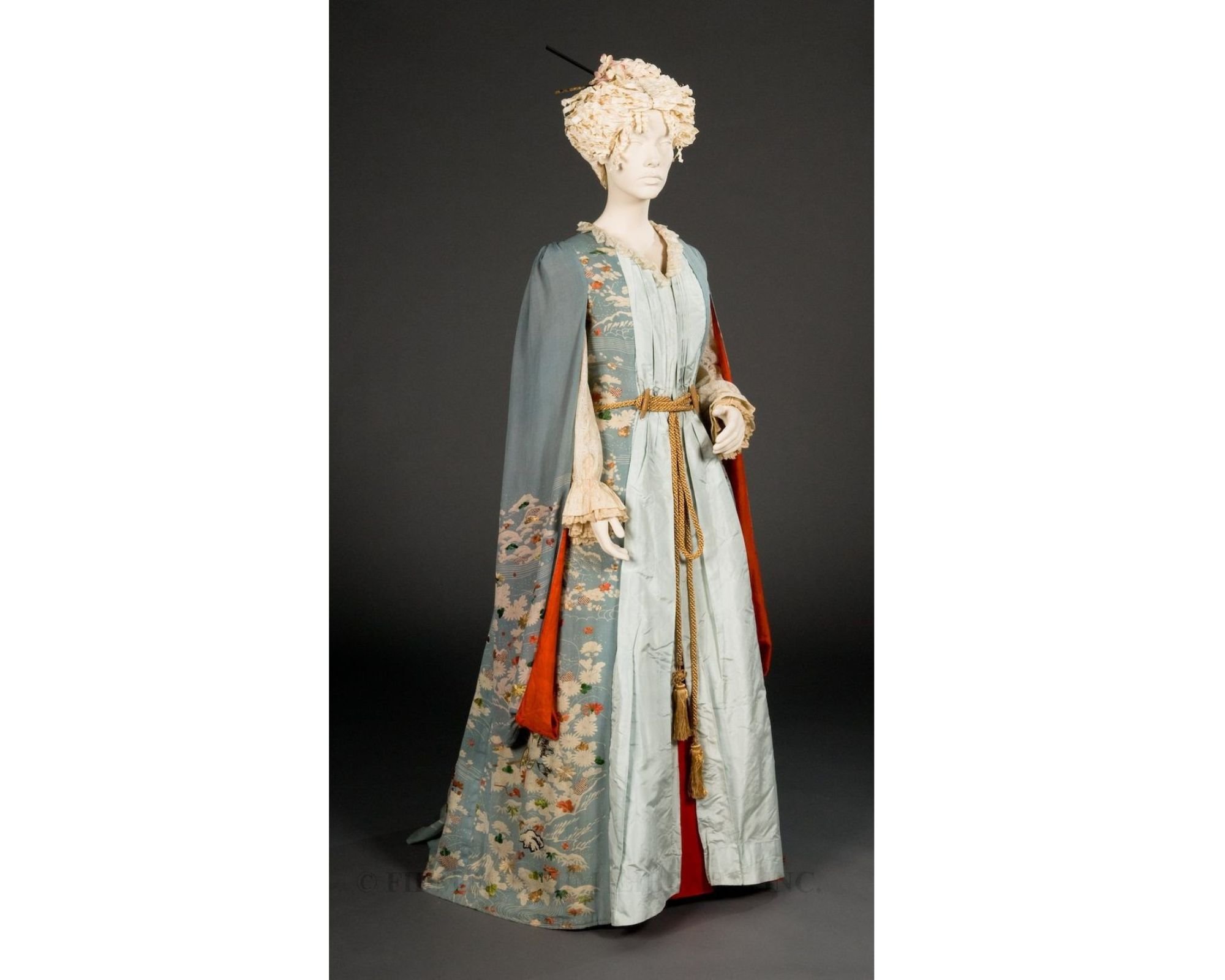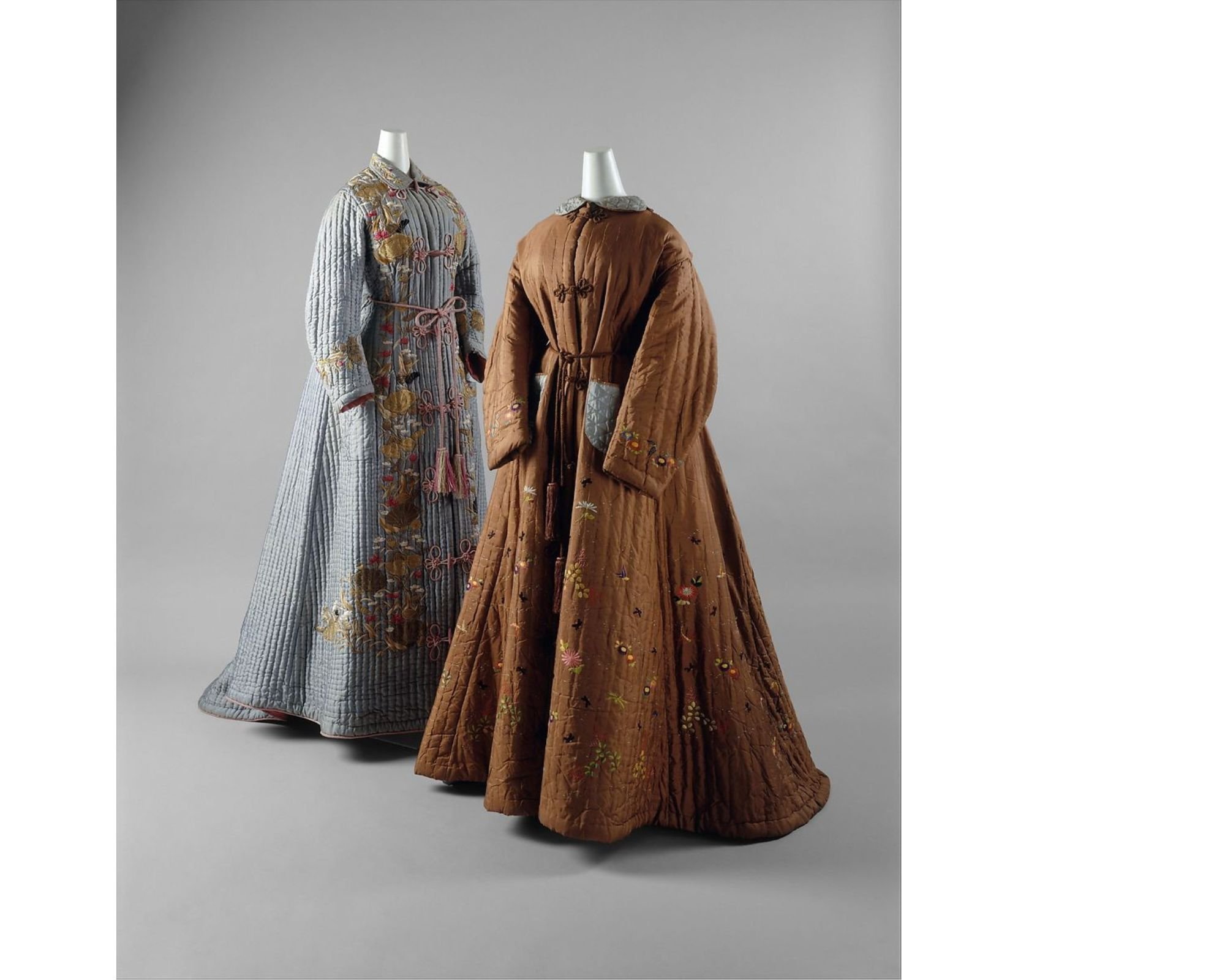Isn’t it nice to wake up on a crisp fall morning, slip on your favorite fuzzy slippers, maybe a pair of fleece lined leggings and a nice, heavy sweatshirt to go fetch the newspaper? While we wrap up in our oldest, softest, most comfortable clothes in our house, or even our driveway, we would never dream of wearing them out to a nice dinner. Our ancestors felt the same, and the realm of “undress” or at-home wear encompasses a variety of cozy options.
In the days before thermostats and climate control, a fireplace could only do so much to combat the winter chill. In the 18th century, once you’d taken off your daytime clothing, you might wrap up in a quilted banyan like this blue one on the right. Banyans were the precursor to a bathrobe or dressing gown, and were often worn for receiving informal visitors or spending time with family at home.
A wrapping gown, sometimes called a “sultana” might be made of expensive silks and lined with sumptuous furs. Catherine, Lady Leicester, chose have her portrait painted in her sultana, displaying her sophistication and wealth in the above image on the right. Imagine posting an Instagram selfie in a Dior bathrobe!
Once skirts got bigger, into the mid-19th century, the air circulation under a hoop skirt could lead to some unpleasant drafts. Women fought the chill with a fad for red petticoats. They might be knitted, crocheted, made from wool flannel, quilted, striped, or any combination thereof (Left: Missouri History Museum 1961.098.0003, ca 1860. Right: Metropolitan Museum of Art 2009.300.7721a, 1865-70)
The wrapper, an un-fitted dress that didn’t require a corset or hoop underneath was a popular choice for at-home wear. Its gathered waist that often tied or laced shut was practical for maternity wear and heavy housework, and probably provided a welcome respite from the confining nature of fashionable clothing. This one, with its rust-colored quilted silk accents is the ultimate in cozy
The forced opening of Japan to Western trade in 1853 increased the appetite of white consumers for imported Asian goods. Dressing gowns based on traditional kimono designs but cut in Western silhouettes became very popular, like this one from the FIDM Museum (Middle image FIDM 80.40.1, ca 1885) and these two from the Met (Right: Metropolitan Museum of Art 1970.83ab and 1975.227.7ab).
Love what you’ve seen? Want to add some historical cozy to your modern wardobe or your costume closet? Book a private class with Julie for yourself and a few friends, or a one-on- one lesson if you prefer, and get to work on elevating your loungewear to the level of art!

